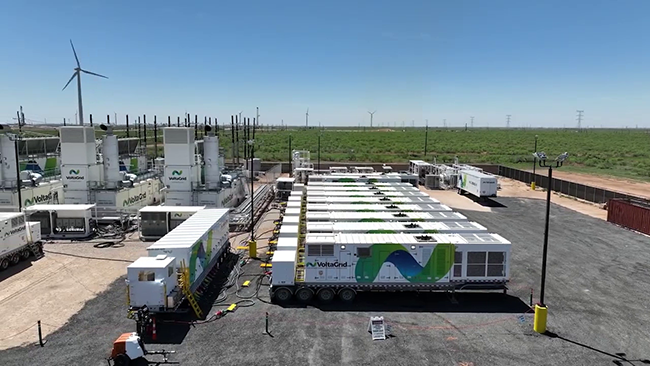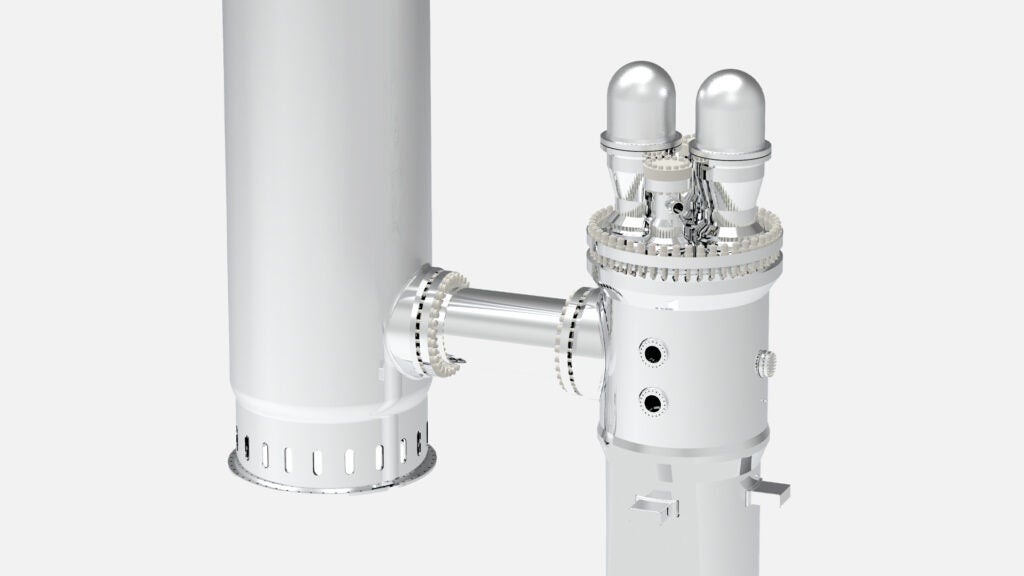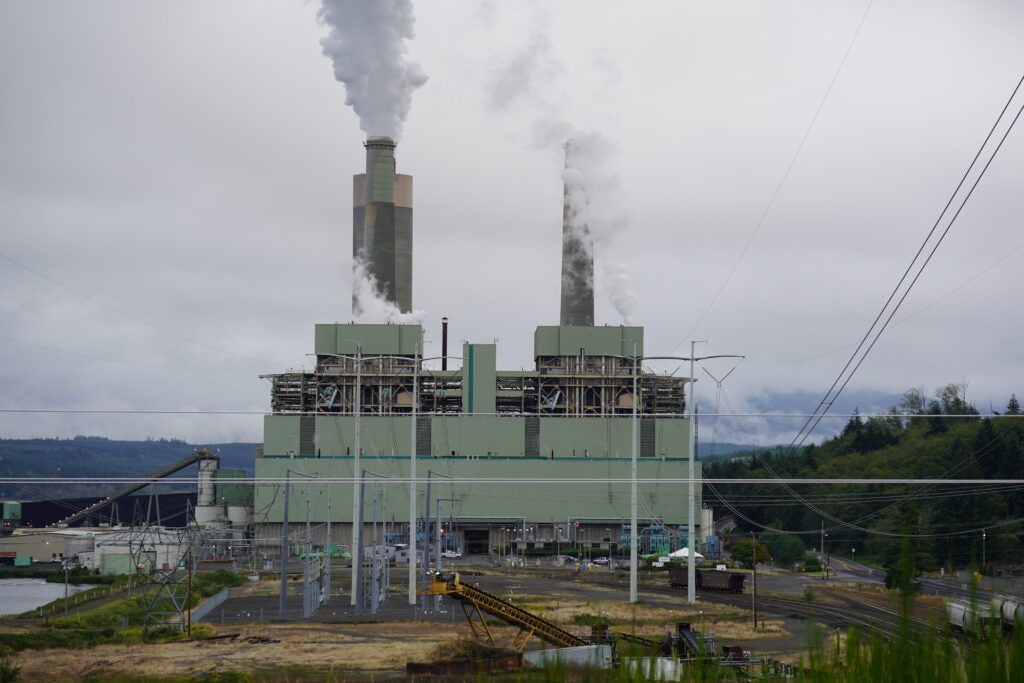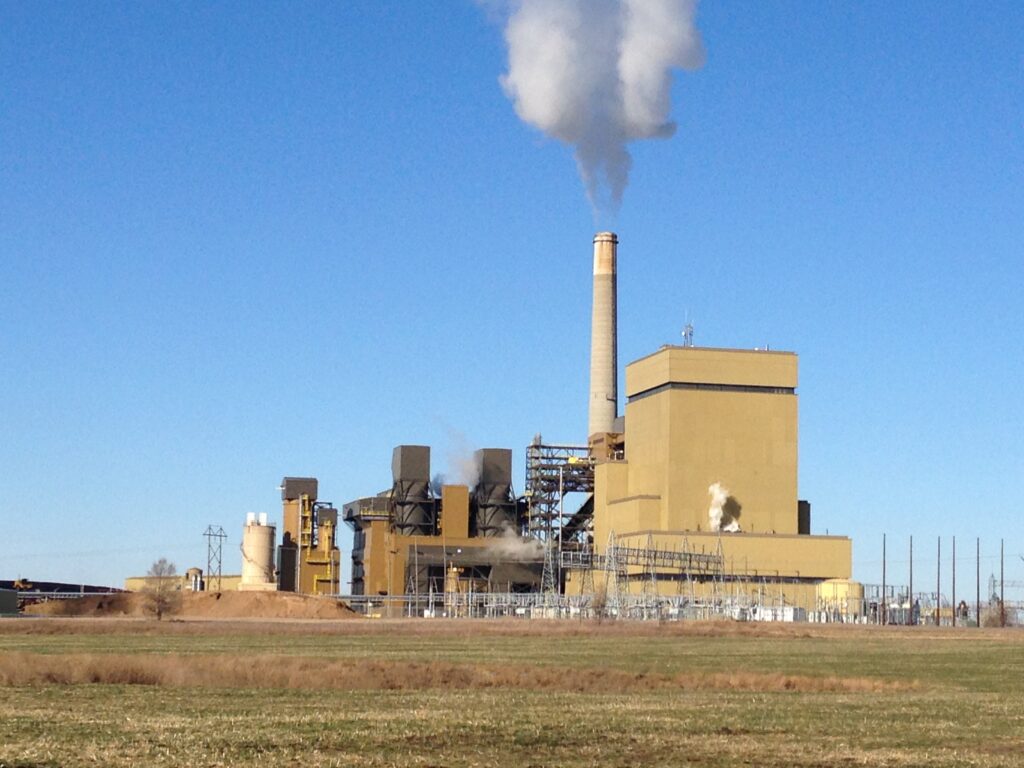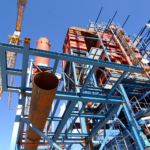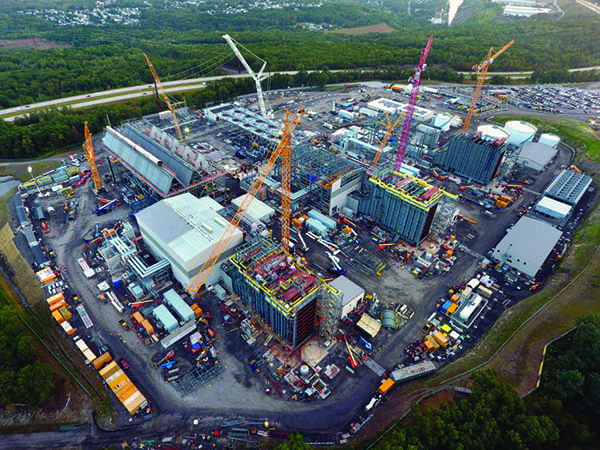Traditional owner-EPC relationships relied on sequenced approvals and risk allocation tied to project maturity. Today’s interdependent infrastructure, including for the grid, generation, storage, and transmission, requires simultaneous optimization of design, procurement, and construction decisions. That is fundamentally changing how contracts are structured and teams are organized.
As the U.S. power infrastructure landscape evolves, the relationship between utilities and engineering, procurement, and construction (EPC) firms is also beginning a transformation. Compared to past decades, where project owners finalized design, secured permits, and then solicited fixed-price bids, new models are prioritizing integrated, risk-transparent partnerships driven by real-time data, collaborative planning, and portfolio-level coordination. The transformation appears to be underpinned by a simple but profound insight: Power projects of the 2020s demand simultaneous optimization—of design, procurement, construction, and operations—across multiple assets and stakeholders.
At the core of the shift are fundamental supply chain disruptions, such as transformer and turbine lead times stretching several years, compounded by workforce scarcity, permitting challenges, and utility infrastructure constraints. At the same time, the demand imperative remains acute: U.S. data center electricity demand could double to 409 TWh by 2030, with artificial intelligence (AI) as a prime driver, according to an October 2025 Bain & Company analysis. Bain notes that hyperscalers are under extraordinary time pressure. Meta, for example, is building gigawatt-scale AI campuses like Richland Parish in 24 to 36 months, and phased commissioning could bring some mission-critical zones online in well under three years. Industry-wide, standard timelines for new data centers now range from 18 to 30 months for most greenfield builds, though permitting, power connection, and equipment procurement could extend those durations by a year or more when hurdles arise.
These converging pressures appear to be redefining risk, including who bears it and when. Under traditional lump-sum contracts, EPCs assumed nearly all financial risk, and while owners locked scope, schedule, and price, contractors either delivered or absorbed losses. But in a market where equipment lead times exceed project timelines by years, and where labor scarcity and supply volatility are structural realities, that model is looking less attractive. At the 2025 EPC Show in Houston, EPC leadership publicly acknowledged a growing shift away from fixed-price delivery toward collaborative, transparent cost-sharing models.
Essentially, they explained, when contractors can no longer price risks that have become uninsurable—supply volatility, multi-year equipment lead times, or constrained labor—the burden inevitably shifts upstream. Some are looking at more amenable contracting models, including progressive design-build, reimbursable with pain/gain share, and open-book transparency, which distribute risk. So, for example, instead of locking in a lump-sum price that conceals exposure until change orders pile up, owners are accepting greater scope definition and cost-escalation risk earlier in exchange for realistic cost visibility and speed. What appears to be emerging is a pragmatic partnership model, where owners carry the financial exposure tied to procurement and schedule compression, while EPCs retain performance and execution risk within a clearly defined scope.
Why Early Engagement Works for Utilities: The Demand Certainty Advantage
At least for now, utilities are embracing early EPC engagement because binding customer agreements now shape project economics. American Electric Power (AEP), for example, reports 28 GW of incremental load growth under executed letters of agreement (LOAs) and electric-service agreements (EASs), about 80% of which is from hyperscalers such as Google, AWS, and Meta. “We have evolved our contracting strategy to sign full take-or-pay agreements earlier in the development cycle, helping us to filter out speculative load,” noted AEP Vice President and CFO Trevor Mihalik. “Commission-approved tariff reforms have strengthened these contracts, especially in our vertically integrated businesses, but generation investments must be tightly aligned with the real demand to protect customer rates.” The agreements, often signed earlier in the development cycle, may give the utility’s EPC partners the real data needed to model commodity, labor, and equipment risk, he suggested.
Entergy has taken a similar approach. The company’s “Superpower Mississippi” initiative (Figure 1), which includes a $300 million investment to harden the grid and improve reliability, funded through new revenues from Amazon and other large industrial customers’ investments in Mississippi, has enabled customer rates to be 16% lower than they otherwise would have been, according to Entergy Mississippi CEO Haley Fisackerly. Separately, Google is covering the full cost of powering its West Memphis data center and is committed to a $25 million fund for local energy efficiency and workforce development. Entergy told investors it has EPC agreements for generation projects through mid-2029 and has secured 90% of the materials required for planned transmission projects through 2030, as its data center pipeline expanded from 7 GW to 12 GW. That contractual visibility strengthens confidence in cost recovery and reduces speculative exposure, it noted.
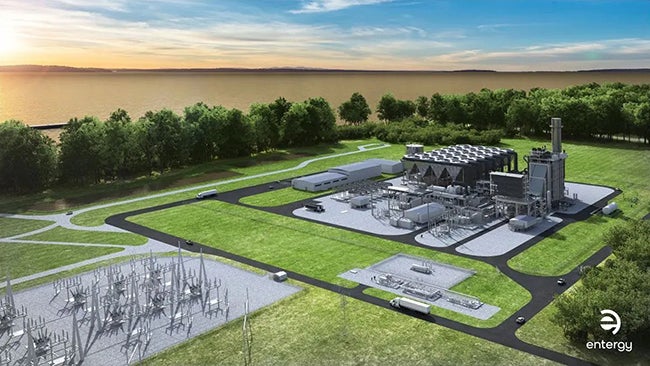 |
|
1. Entergy Mississippi’s $1.2 billion Vicksburg Advanced Power Station marks the next phase of the utility’s Superpower Mississippi initiative to replace 50-year-old gas units with modern combined cycle generation. The 754-MW plant, to be built by TSL Power Partners—a joint venture of TIC (The Industrial Company) and Sargent & Lundy—along with Mitsubishi Power Americas, will use advanced 1×1 combined cycle technology capable of future hydrogen blending. Courtesy: Entergy |
Entergy’s staged approach to large customer contracting underscores how utilities are using binding milestones to manage risk and stage investment. As of October 2025, Dominion reported about 47 GW of data center demand “in various stages of contracting,” divided into 28 GW under substation-engineering letters of authorization, 9 GW under construction letters of authorization, and nearly 10 GW in electric-service agreements. CEO Bob Blue explained that as customers move from one stage to the next, their financial commitment increases and that “should a customer in this stage elect to discontinue a project, they’re obligated to reimburse the company for its investment to date.” The framework ensures cost recovery and gives Dominion and its EPC partners predictable triggers for mobilizing resources. That same alignment was echoed at Southern Co., where executives highlighted minimum-bill provisions that “cover all of our costs, whether or not the meter spins,” allowing utilities and contractors to commit labor and materials earlier, supported by stable revenue streams.
The shift, meanwhile, appears to be recasting the EPC’s role (see sidebar). Instead of minimizing costs within rigid budgets, contractors are helping owners understand and manage uncertainty through data. “We start by defining clear procurement and hedging objectives,” said Brian Despard, senior project manager with 1898 & Co., the business and technology consulting arm of Burns & McDonnell. “From there, we use probabilistic modeling to quantify both price and volume risks. That kind of analysis helps you see the full range of possible outcomes and gives you a strong, data-driven basis for conversations with regulators about prudent risk management.” Despard added that once that framework is in place, teams can test hedge strategies and adapt to changing market conditions. “That combination of structure, diversity, and flexibility really resonates with regulatory commissions,” he said, “because it shows that decisions aren’t reactive or speculative. Instead, they’re disciplined, transparent, and grounded in a clear understanding of risk and market dynamics.”
Speed Over Scale: Fresh Prospects for Smaller, Specialist EPCsThe pressure for speed and flexibility is reshaping the engineering, procurement, and construction (EPC) competitive landscape across multiple fronts. While mega-contractors remain dominant for utility-scale projects, a cohort of specialized, mid-sized, and smaller EPCs—and notably, a new class of fast-deployment integrators and orchestrators—is capturing market share that requires rapid mobilization. Fagen Inc., a Minnesota-based non-union EPC, reports that it “maintains a database of over 10,000 craftworkers” and publicly lists recent thermal work that includes simple-cycle gas and reciprocating-engine projects. USP&E Global explicitly markets “gas turbine power plants deliverable in 90–180 days—bypassing grid constraints and enabling immediate data center deployment.” Meanwhile, more companies, like New APR Energy, are promoting mobile aeroderivative turbine packages with stated 30- to 90-day deployment windows for large commercial loads, including data center applications. ProEnergy is also targeting this niche by repurposing aviation-derived engines into modular fast-start blocks intended to help developers bridge equipment shortages. Touted advantages often include direct labor, self-performance, reducing subcontracting overhead, regional presence, and agility in compressed timelines. A similar shift is unfolding behind the meter (BTM). VoltaGrid has reported deploying large fleets of modular natural gas units (Figure 2) to support data center growth in Texas through partnerships with INNIO Jenbacher, Vantage Data Centers, and with hyperscalers like Oracle. Calibrant Energy and Aligned Data Centers recently completed an on-site battery system at a Pacific Northwest campus intended to accelerate interconnection. DEPCOM Power continues to build turnkey solar-plus-storage solutions for industrial customers, including BTM installations. Wärtsilä has likewise highlighted U.S. data center projects using its flexible engine platforms. Dozens of other companies are competing for fast-track natural gas turbine deployments.
|
How Digital Tools and Real-Time Analytics Are Reshaping Execution
From a different plane, the integration of digital platforms and AI into project delivery is also allowing EPCs and owners to translate procurement and scheduling visibility into actionable performance metrics. Rather than reacting to overruns after they occur, forward-looking teams are embedding analytics and automation into project workflows from the start. The tools are also allowing EPCs to communicate risk and progress in real time, creating a pivotal shared-data environment where owners, engineers, and constructors can make decisions based on the same live information, experts told POWER.
The range of digital strategies now being deployed across the EPC industry reflects different competitive approaches, but most seek to eliminate friction between design, procurement, and construction. Some firms have invested heavily in proprietary AI platforms that automate design and estimating at an enterprise scale. Kiewit has developed two transformative AI tools: KADE (Kiewit Algorithmic Design and Engineering) and ADAPT (Advanced Data Analytics Platform Tool). “KADE was tailored from an off-the-shelf solution, while ADAPT was developed entirely in-house. Both use deterministic AI to meet real project needs,” Kiewit noted in a July announcement.
KADE seeks to speed up 3D model creation for complex industrial facilities by automatically generating full models from basic inputs—process diagrams, equipment lists, and site layouts. “KADE was built to follow the same processes an engineer or designer would, using the same software and data,” said Matt Lawrence, director of Engineering Technology Solutions for Kiewit Technology Group. “The difference is automation. It streamlines the work and delivers the same quality output you’d expect from a person, but in a fraction of the time.” The business impact has been substantial, given that it allows teams to explore more design options and engage clients earlier, while changes are less costly.
“KADE’s speed allows estimators to put more ‘hooks in the water’ (more bids),” Lawrence noted. However, the transition introduces organizational challenges. As Lawrence explained: “The perspective can be, ‘I only have one job that’s supposed to last me eight weeks, but you just completed it in eight minutes. Now what do I do?’ ” The goal, he emphasized, is not replacement but elevation: “It’s to remove the tedious steps so they can focus on critical thinking and, ultimately, win more work.”
ADAPT is Kiewit’s ground-up custom platform addressing gaps that off-the-shelf software cannot solve. Ryan Jisa, leading ADAPT’s development, described it as a platform that “guides you through the process and taps into powerful algorithms along the way.” He is scaling it for enterprise deployment: “My focus has been on transitioning ADAPT from a prototype to an enterprise-scale platform.” One application is for solar layout optimization—determining where panels and metal racks go across thousands of acres. “Before ADAPT, generating even one layout could take days or weeks, making it tough to stay competitive in a four-week bid cycle. Now, we get multiple layouts within the first few days of an estimate kickoff, with our standards, constructability, and quantities built in,” said Todd Eiter, Kiewit’s director of solar engineering. Earthwork planning has been similarly transformed.
Burns & McDonnell exemplifies an end-to-end integration strategy combining augmented reality visualization, automated design workflows, and collaborative robotics. “We are using augmented reality technology to optimize our construction projects and prevent costly rework in the field,” Joey Mashek, vice president in the Power Group at Burns & McDonnell, told POWER. “By overlaying our digital 3D models onto the physical job site, we can perform real-time verification of everything from underground utilities to the precise placement of anchor bolts and pipe stubs before concrete is poured. This allows us to instantly detect any potential discrepancies between the design model and field conditions, effectively optimizing the construction sequence and eliminating the schedule delays and budget overruns.”
Mashek also described Burns & McDonnell’s approach to automating design-intensive processes. “On the solar side of things, we developed an automated grading design tool that transformed what used to be a two-week manual process into a four-hour digital workflow,” he said. “That shift doesn’t just save time—it redefines how our teams think about design. For the industry, that means better cost control, faster execution, and fewer surprises in the field.” The firm has extended this philosophy to fabrication: “Our fabrication teams are integrating collaborative robots (cobots) to sharpen precision and redefine productivity in our production shops. Using the tech to automate repetitive tasks empowers our skilled professionals as they collaborate to create prefabricated metal components that meet exacting standards. And we’re also exploring various forms of robotic technology in the field.”
The Convergence: Data-Driven Collaboration
The data-driven sophistication now embedded in project delivery is inseparable from a broader shift toward transparent, collaborative contracting, experts told POWER. When EPCs have real-time visibility into design-construction trade-offs, cost drivers, and schedule dependencies, they can move from adversarial fixed-price models to partnership-based risk sharing, suggested Brendan O’Brien, senior business development manager in the Power Group at Burns & McDonnell.
For example, “A client’s load was projected to double, making it imperative to add significant generation capacity to the grid by 2026 to continue providing grid stability and reliability,” he said. “The accelerated timeline precluded a conventional, multi-stage project development process. To meet this challenge, we formed a close partnership with the client and executed the project using a progressive EPC model.” That project began with full transparency, he noted. “We began with an open-book contract, allowing for transparent collaboration on design and procurement,” he explained. “This phase was crucial for building trust and aligning on key decisions regarding equipment and construction strategy. After achieving client confidence in the project’s direction and cost structure, we closed the book and converted the contract to a firm-lump-sum agreement.”
—Sonal Patel is a POWER senior editor (@sonalcpatel, @POWERmagazine).



